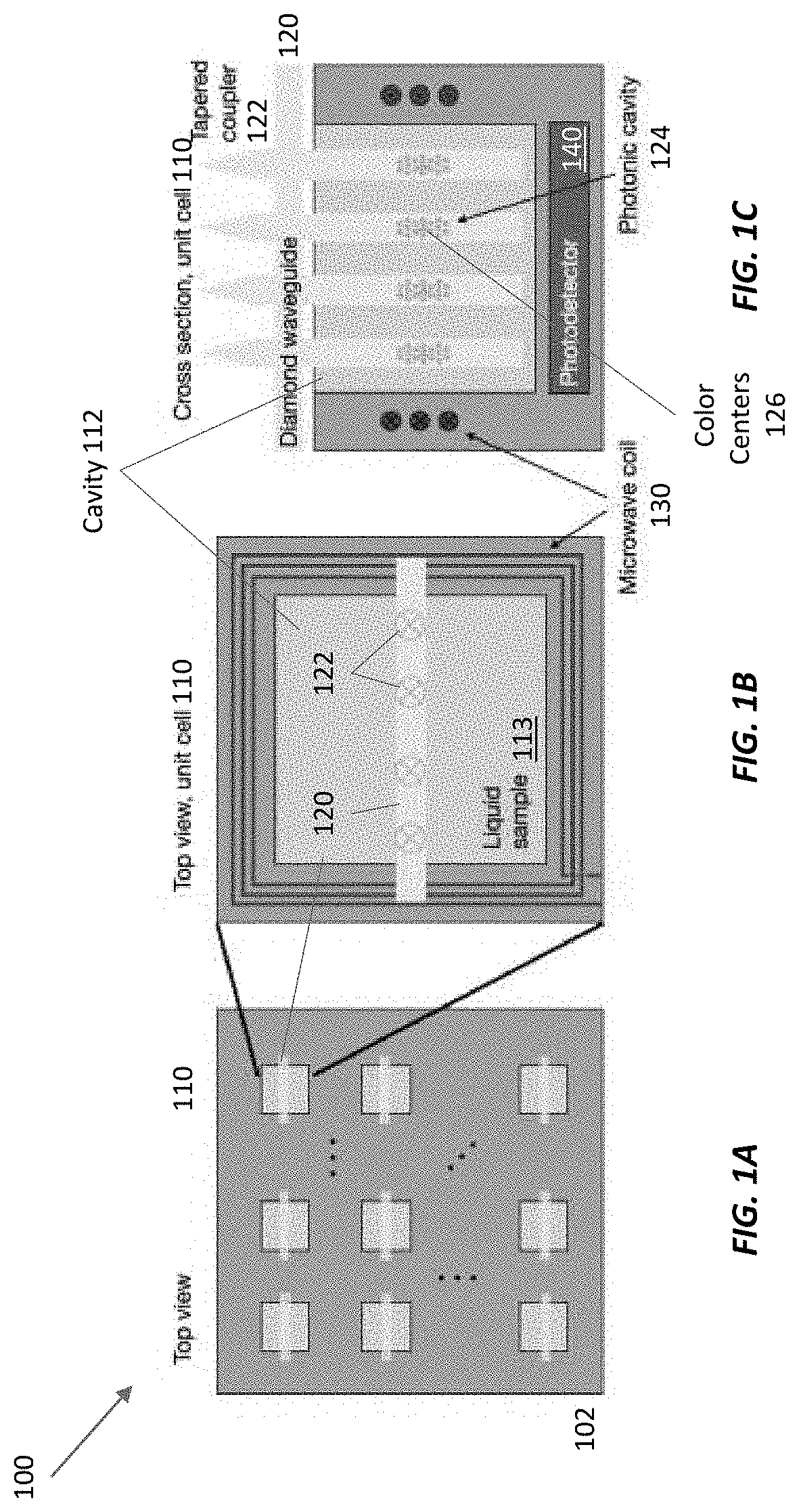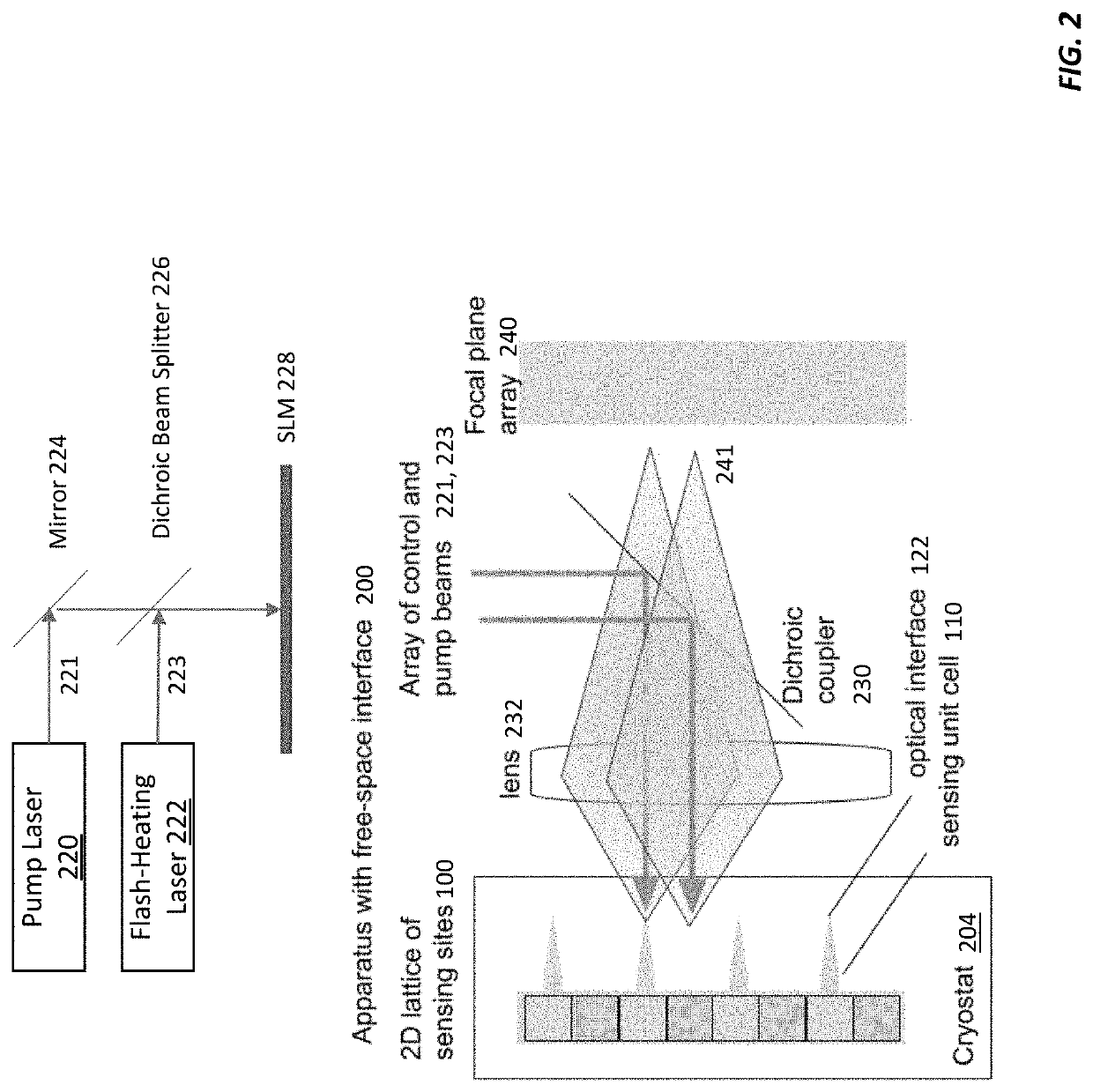Cryogenic Integrated Circuits Architecture for Multiplexed Chemical-Shift NMR
- Summary
- Abstract
- Description
- Claims
- Application Information
AI Technical Summary
Benefits of technology
Problems solved by technology
Method used
Image
Examples
Embodiment Construction
[0035]Chemical NMR spectroscopy using color centers, such as nitrogen vacancies (NVs) in diamond, can be used to measure the effects of chemical bonds on NMR frequency in sample volumes that are less than one cubic millimeter in size. The color centers act as magnetometers that make sensitive measurements of the NMR resonance(s) of the nuclei in the sample. These measurements can be used to sense the effects of chemical bonds on the NMR resonance frequencies.
[0036]Cooling the sample to cryogenic temperatures (e.g., 4.8 K or below) increases the sample polarization, which in turn increases the net spin to levels high enough to be detected reliably, even for very small (e.g., cell-sized) sample volumes. Unfortunately, most solid samples tend to have built-in magnetic field inhomogeneities that degrade chemical NMR signals. This is why conventional chemical NMR is performed on liquid samples, where motional averaging eliminates magnetic field inhomogeneities.
[0037]An inventive diamond ...
PUM
 Login to View More
Login to View More Abstract
Description
Claims
Application Information
 Login to View More
Login to View More - R&D
- Intellectual Property
- Life Sciences
- Materials
- Tech Scout
- Unparalleled Data Quality
- Higher Quality Content
- 60% Fewer Hallucinations
Browse by: Latest US Patents, China's latest patents, Technical Efficacy Thesaurus, Application Domain, Technology Topic, Popular Technical Reports.
© 2025 PatSnap. All rights reserved.Legal|Privacy policy|Modern Slavery Act Transparency Statement|Sitemap|About US| Contact US: help@patsnap.com



